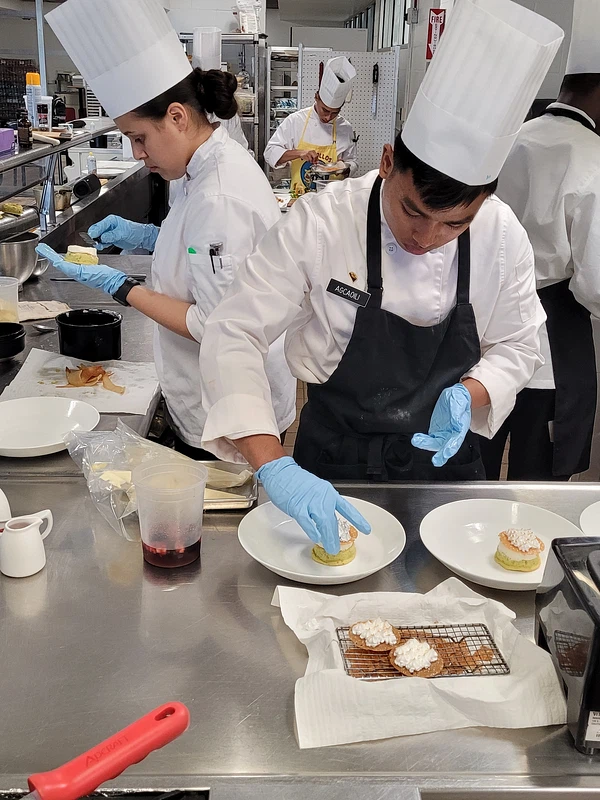While the image of a chef might conjure up a lone figure in a pristine white coat, the reality is far more nuanced. Different chefs specialize in different areas, hold varying levels of responsibility, and contribute unique skills to successful today food recipes. Understanding these roles, and the hierarchy that often governs them, offers a glimpse into the intricate dance of a bustling kitchen environment.
Beyond the familiar “chef” title, a whole range of specialized roles exists. Here’s a breakdown of some common types of chefs you might encounter:
The Kitchen Hierarchy (the Brigade de Cuisine):
This classic system, established by Auguste Escoffier, is the bedrock of many professional kitchens, particularly in fine dining and hospitality settings.
- The Executive Chef (Chef de Cuisine) serves as the principal authority in the kitchen, overseeing all operations including menu development, cost management, staffing, and training. This role is frequently associated with being the public representative of the restaurant and is integral to the management team. Possessing robust business insight and leadership capabilities is crucial.
- Sous Chef (Second-in-Command): The Executive Chef’s right hand. They supervise the kitchen staff in the absence of the Executive Chef and often manage daily operations, including food preparation and quality control.
- Station Chef (Chef de Partie): This culinary professional oversees a designated area in the kitchen, demonstrating expertise in specific domains such as pastry, sauces, or grilling. This role encompasses additional specializations.
- Saucier (Sauce Chef): Considered one of the most prestigious stations, the saucier is responsible for creating and preparing sauces, stocks, and gravies.
- Poissonier (Fish Chef): Handles all aspects of fish preparation, from cleaning and filleting to cooking and plating.
- Rôtisseur (Roast Chef): Specializes in roasting meats and poultry.
- Grillardin (Grill Chef): Responsible for all grilled items.
- Garde Manger (Pantry Chef): Responsible for the preparation of cold dishes, salads, appetizers, as well as pâté and charcuterie.
- Pâtissier (Pastry Chef): Creates desserts, pastries, and baked goods.
- Commis Chef (Junior Chef): A beginning chef who works under a chef de partie to learn the skills and techniques of a particular station. They are often assigned basic tasks like chopping vegetables or preparing ingredients.
- Plongeur (Dishwasher): While often overlooked, the plongeur is an integral part of the kitchen team, ensuring a clean and sanitary environment.
Below are additional prevalent roles for chefs:
- Personal Chef: Unlike restaurant chefs, personal chefs work directly for individuals or families, catering to their specific dietary needs and preferences. They might handle meal planning, grocery shopping, and cooking in the client’s home.
- Catering Chef: Focuses on the preparation and service of food for significant events, including weddings, corporate functions, and social gatherings. This role requires excellent organizational abilities and proficiency in overseeing large-scale food production.
- Baking Chef: Focuses solely on baking and often works in bakeries, cafes, or dedicated baking sections of larger restaurants. Their expertise lies in bread, pastries, cakes, and other baked goods.
- Pastry Chef (again, but with emphasis on different settings): While also a station in the brigade, some pastry chefs are specialized, running their own independent pastry shops, catering exclusively to dessert needs, or working as consultants.
- Research and Development Chef (R&D Chef): Works for food manufacturers or restaurants, focusing on developing new recipes, improving existing products, and staying ahead of culinary trends.
- Culinary Instructor: Shares their knowledge and passion for cooking by teaching culinary arts at schools, colleges, or private institutions.
Choosing A Path: The Culinary Journey
Whether you aspire to lead a bustling kitchen, create today food recipes, or share your love of cooking with others, understanding the different roles and specializations is the first step in carving your own culinary journey. Consider your strengths, interests, and long-term goals to determine which type of chef aligns best with your aspirations. The journey may be long and challenging, but the rewards of a successful culinary career are undeniably delicious.
